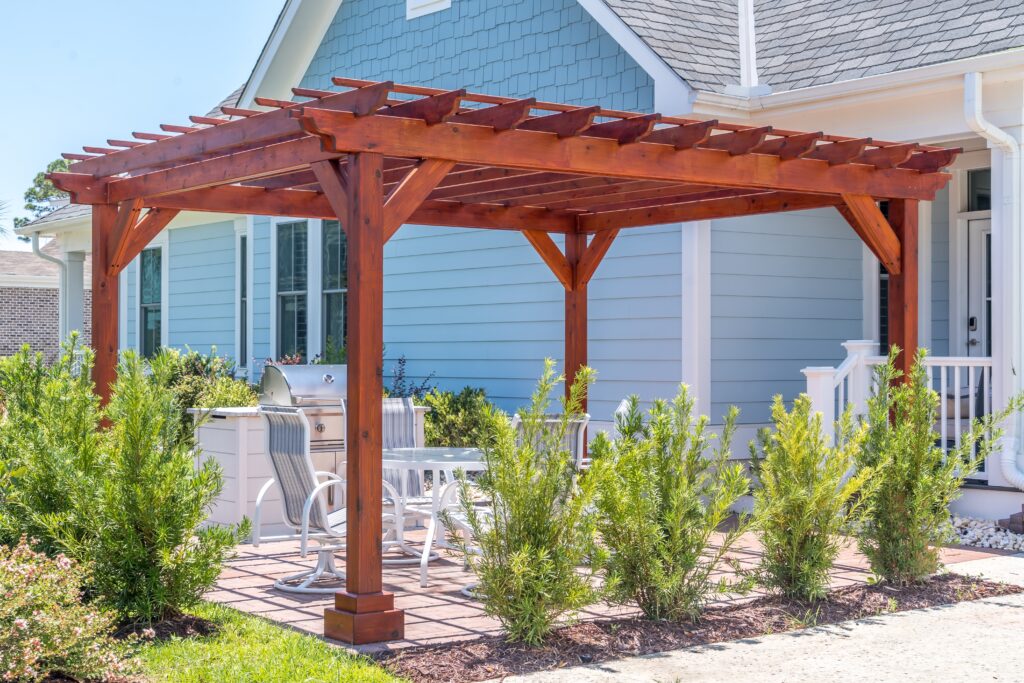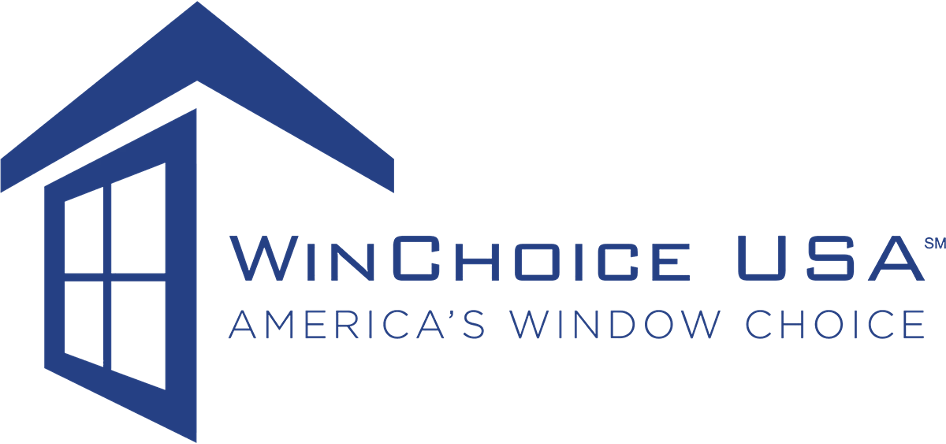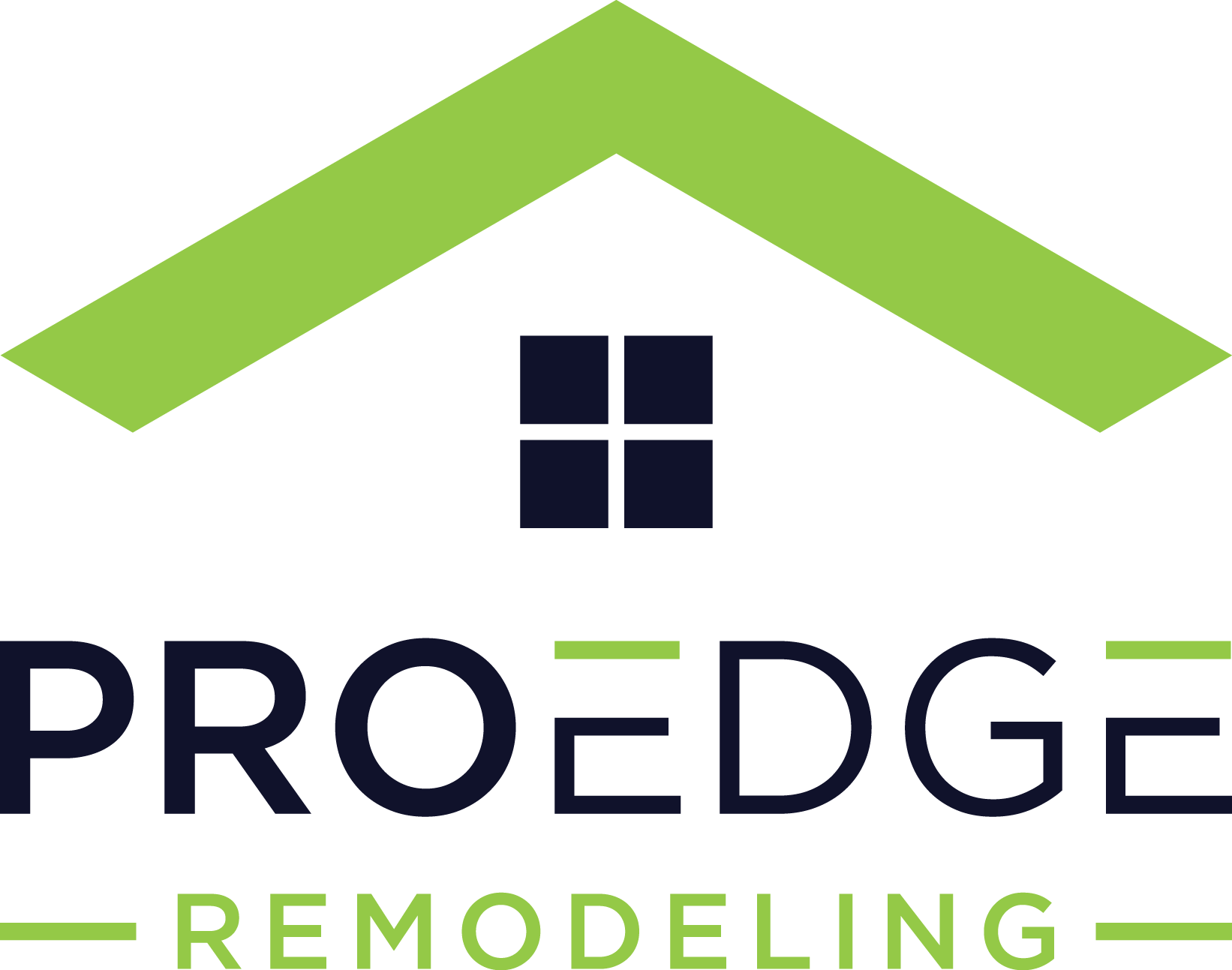Pergola with Roof vs. Traditional Pergola: What’s Right for You?

Thinking about upgrading your backyard? A pergola might be just the thing to transform your outdoor space. But before you start picking out string lights and patio furniture, there’s one big decision to make: should you go with a traditional open-top pergola, or opt for one with a solid roof?
Both styles have their perks, and the right choice really depends on how you plan to use the space, your local climate, and your overall vibe.
In this article, we’ll break down the key differences between pergolas with roofs and their classic open-top counterparts so you can figure out which one fits your backyard goals best.
Table of Contents
- What Is a Traditional Pergola?
- What Is a Pergola with a Roof?
- Pros and Cons of Traditional Pergolas
- Pros and Cons of Pergolas with Roofs
- Cost Comparison
- Style and Aesthetic Differences
- Maintenance Considerations
- Climate and Lifestyle Considerations
- Do You Need a Permit?
- Pergola Alternatives to Consider
- Additional Home Improvement Resources
What Is a Traditional Pergola?
A traditional pergola is that classic, open-air structure you’ve probably seen in a lot of backyard setups—and for good reason. It’s simple, stylish, and adds instant charm to any outdoor space. Unlike a full roofed structure, a traditional pergola has an open-top design, usually made up of slatted or lattice-style beams that run across the top. These beams don’t completely block the sun, but they do create a nice dappled shade effect that makes your patio feel cooler and more inviting.
You’ll often find traditional pergolas made from materials like wood (for a warm, natural look), vinyl (which is super low-maintenance), or aluminum (great for durability and modern vibes). No matter the material, they’re all designed with one main goal in mind: to give you a little shade while keeping things breezy.
Because of the open design, air flows freely, making these pergolas perfect for hot summer days when you want to stay cool without hiding completely from the sun. They’re ideal for lounging, dining, or just adding structure to your garden or patio area—and they can be customized with climbing vines, string lights, or outdoor curtains to suit your style.
What Is a Pergola with a Roof?
A pergola with a roof is basically the more weather-ready, all-season cousin of the traditional pergola. While it still has that open, airy feel that makes pergolas so appealing, the big difference here is the roof. Instead of slats or lattice that let in partial sun, this type of pergola comes with a solid or semi-solid roof that provides full coverage from the elements.
You’ve got a few options when it comes to roofing materials. Some go with polycarbonate panels, which are lightweight, durable, and let in a bit of natural light without letting the rain through.
Others choose metal, shingles (to match their home), or even retractable canopies for a flexible setup that can open or close depending on the weather. Whether you’re trying to block out blazing sun or keep your furniture dry during a surprise rainstorm, a roofed pergola has you covered.
Because of the added structure and shelter, these pergolas often blur the line between pergolas, gazebos, and pavilions. They give you that same cozy, defined space but with a bit more protection and year-round usability. Whether you’re dreaming of an outdoor kitchen, a covered dining area, or a relaxing nook you can use rain or shine, a pergola with a roof brings the functionality of an indoor space right to your backyard.
Pros and Cons of Traditional Pergolas
Pros
One of the biggest perks of a traditional pergola is airflow. Because it’s open on top, it lets in plenty of fresh air, which is a total win on warm days when you still want to feel the breeze. It’s also great for keeping things from feeling too enclosed or stuffy.
Another bonus? Affordability. Traditional pergolas are usually more budget-friendly than their roofed counterparts. Fewer materials, simpler construction—it all adds up to savings, especially if you’re trying to keep costs in check.
Then there’s the classic look. Traditional pergolas have that timeless, charming design that fits just about any backyard style. Whether you’re going rustic, coastal, or modern farmhouse, they blend in beautifully.
And if you’re the DIY type, you’ll love that traditional pergolas are easier to build yourself.
Cons
Of course, traditional pergolas aren’t perfect. The most obvious downside is limited weather protection. Because the top is slatted, it won’t keep out rain or block the sun entirely—so you’re kind of at the mercy of the weather.
They also offer less privacy. No solid roof means your space is more open, which can be great—or not so great if you’re looking to create a more secluded retreat.
And unfortunately, they’re not very usable during rain. Even a light drizzle can make the space feel uninviting, which limits how much use you’ll get out of it, especially if you live somewhere with unpredictable weather.
Pros and Cons of Pergolas with Roofs
Pros
The biggest draw of a pergola with a roof? All-weather use. Rain, shine, or even a bit of snow—you’ve got protection. It extends the life of your furniture and makes the space usable way more often.
You also get great UV and rain protection. Whether you’re sipping coffee in the morning or hosting a summer dinner party, you don’t have to worry about sunburns or damp cushions. It’s especially great for families or anyone who wants to spend more time outdoors without constantly checking the forecast.
And if you’re big on outdoor dining or lounging, this type of pergola is kind of perfect. With a solid roof overhead, your space starts to feel like an outdoor living room or kitchen.
Cons
That said, roofed pergolas do come with a few trade-offs. First off, they cost more. Adding a roof means more materials, more labor, and often, more money out of pocket. So it’s not always ideal for budget-conscious projects.
Depending on where you live, you may also need permits to install one. Because it’s a more permanent structure, it can trigger zoning rules or require HOA approval. It’s not a dealbreaker, but it’s one more thing to research.
Lastly, the airflow isn’t as free as it is with a traditional pergola. While you get protection from the elements, you also lose some of that open, breezy feeling—though you can always design around it with fans or open sides to keep the air moving.
Cost Comparison
When it comes to pricing out your dream pergola, there’s a pretty big difference between going with a traditional open-top design and one with a full roof—and knowing what to expect cost-wise can help you plan smarter and avoid sticker shock.
A traditional pergola typically falls in the range of $2,000 to $6,000, depending on the size, materials, and whether you DIY or hire a pro. If you’re handy and go the DIY route using basic materials like pressure-treated wood or vinyl, you can usually keep costs toward the lower end. On the flip side, if you want a custom-built pergola made with premium hardwood or decorative touches, the price can climb closer to the $6K mark (and possibly more).
Now, if you’re eyeing a pergola with a roof, you’re looking at a bigger investment—anywhere from $4,000 to $12,000 or more. The added cost comes from the extra materials (roof panels, supports, insulation), the complexity of installation, and often the need for permits. Roof types also play a role here: a simple polycarbonate cover will cost less than a metal or shingled roof that matches your house. And if you’re going all out with lighting, fans, or retractable panels? Expect to be on the higher end of that range.
Here are a few factors that can influence the final cost of your pergola project:
- Materials – Wood is classic but can be pricey, especially for cedar or redwood. Vinyl is lower maintenance but might have limited style options. Aluminum is durable and sleek but may cost more upfront.
- Labor – Hiring a contractor will bump up the cost, but it can save you a ton of time and headaches. Custom jobs also usually mean higher labor fees.
- Roofing Type – A basic canopy or polycarbonate sheet is cheaper, while metal, shingles, or retractable roofs cost more to install and require more structural support.
- Custom Features – Things like built-in lighting, privacy screens, ceiling fans, or integrated seating can add serious style—but also extra dollars to your budget.
In short, traditional pergolas are more budget-friendly and great for DIY-ers, while pergolas with a roof offer more function and comfort but come with a higher price tag. It really comes down to how you plan to use the space and what features matter most to you.
Style and Aesthetic Differences
One of the most fun parts of choosing a pergola is picking a style that fits your space and personal taste. Whether you go with a traditional pergola or one with a roof, the aesthetic impact is huge, and each type brings its own unique vibe to your backyard.
Traditional pergolas have that classic, open and airy look that adds just enough structure to your outdoor space without feeling too heavy or enclosed. The slatted roof design lets in dappled sunlight, which creates a soft, inviting atmosphere—perfect for gardens, patios, or spaces where you still want to feel connected to the sky and breeze.
On the other hand, pergolas with roofs tend to give off a more permanent, built-in feel. They resemble outdoor rooms, which makes them ideal if you’re going for that “backyard living room” vibe. These structures feel a bit more polished and upscale, especially when paired with a dining area, outdoor kitchen, or cozy seating setup. Depending on the roof material, they can take on a range of styles.
When choosing between the two, it’s a good idea to think about your home’s existing architecture. If you have a traditional or cottage-style home, a classic wood pergola with open slats might be the perfect match. But if your house leans modern or has a more substantial exterior, a roofed pergola with clean lines or matching roofing materials can really pull the whole look together. The key is to make the pergola feel like a natural extension of your home—not something that looks out of place.
No matter which route you go, you can always personalize your pergola with finishes, furniture, and accessories to make it uniquely yours. The goal is to create a space that looks great and makes you want to spend more time outside.
Maintenance Considerations
When you’re deciding between a traditional pergola and one with a roof, it’s not just about looks and cost—you’ve also got to think about the upkeep. Like any outdoor structure, pergolas are exposed to the elements 24/7, so knowing what kind of maintenance each one requires can save you time.
Traditional pergolas are generally pretty low maintenance, especially if you go with materials like vinyl or aluminum. They usually just need the occasional rinse with a hose and a quick scrub to remove dirt, leaves, or mildew—especially in shaded or damp areas.
If you go with a wood pergola, though, you’ll need to put in a little more effort. Wood needs to be sealed or stained every couple of years to protect it from moisture, sun damage, and pests. It’s not a huge job, but it’s something to keep on your radar.
Pergolas with roofs, on the other hand, come with a bit more maintenance, mainly because of the roof itself. If your pergola has a solid roof, whether it’s metal, shingles, or polycarbonate panels, you’ll want to make sure it stays clean and free of debris like leaves or branches.
Gutter-style edges may also need clearing, just like your regular house gutters. Some roofing materials may fade over time or require periodic cleaning to maintain their appearance, especially in dusty or humid climates.
As for longevity, a lot depends on the materials you choose and how much exposure your pergola gets to sun, rain, snow, or salty coastal air. Vinyl and aluminum tend to last longer with less upkeep, while wood can be super durable if properly maintained.
Roofed pergolas generally have the edge when it comes to weather protection, simply because they’re built to shield the space (and themselves) from the elements. However, if a roof is made of lower-quality materials or isn’t installed properly, it could lead to leaks or damage over time.
Climate and Lifestyle Considerations
When choosing between a traditional pergola and one with a roof, your local climate and how you plan to use the space should definitely be part of the decision-making process. After all, what works great in one backyard might be a total disappointment in another.
Live somewhere hot and sunny? A pergola with a roof might be your new best friend. It offers way more protection from intense sun and heat, which means you won’t be sweating through your outdoor brunch or BBQ.
Solid roofing—especially with UV-reflective materials—helps keep things shady and cool, even during peak afternoon rays. And if you really want to go all out, add a ceiling fan or a misting system underneath.
If rain or snow is more your backyard reality, then a roofed pergola is definitely the smarter move. That extra coverage protects everything underneath—your furniture, grill, string lights—from getting soaked or buried.
In snowy areas, you’ll just want to make sure the roof is built to handle heavy snow loads (think sturdy materials like metal or shingles). A roofed pergola basically lets you enjoy your outdoor space in all seasons, without constantly checking the forecast or dragging cushions inside.
If you live in a place with mild weather most of the year, a traditional open-top pergola might be all you need. It lets the sun in, allows for great airflow, and creates that light, breezy backyard vibe that’s perfect for relaxing or entertaining on cooler days.
Then there’s the lifestyle factor—how do you actually picture using this space?
- If you’re dreaming of a cozy spot to fire up the grill and host dinner parties, a roofed pergola gives you more flexibility and comfort, no matter the weather.
- Want a peaceful place to sip coffee, read a book, or catch some rays? A traditional pergola gives you that open, airy feel with just the right amount of shade.
- Looking for a family hangout zone with a fire pit and comfy seating? Either one can work, but a roofed pergola might give you more consistent use year-round.
Do You Need a Permit?
Before you get too far into designing your dream pergola (especially one with a roof), it’s worth asking: do I need a permit for this? It really depends on where you live and the type of pergola you’re building.
If you’re going with a roofed pergola, there’s a good chance you’ll need to get some kind of approval. Since a solid roof adds more structural complexity (and often turns your pergola into a more “permanent” outdoor structure), many cities or counties will require a building permit to make sure it’s up to code. This is especially true if you’re attaching the pergola to your house, running electrical wiring, or if the structure exceeds a certain size or height.
Traditional pergolas might be a little more lenient when it comes to permits. In some areas, smaller freestanding pergolas that don’t have a roof or walls can be installed without one. But again, it totally depends on your location.
You’ll also want to check with your local HOA if you have one. Even if your city doesn’t require a permit, your homeowners association might have its own set of rules when it comes to outdoor structures. Things like placement, height, color, and materials can all fall under their guidelines, and you definitely don’t want to be the one who installs a beautiful pergola only to find out it’s not allowed.
The best move? Call your city’s building department or hop on their website to look up pergola rules and permit requirements. It might feel like a hassle now, but it’s way easier (and cheaper) to take care of permits upfront than to deal with fines, do-overs, or teardown notices later.
Pergola Alternatives to Consider
Not totally sold on a traditional pergola or a fully roofed one? There are plenty of creative alternatives out there that give you the best of both worlds. Whether you’re looking for more flexibility, a modern touch, or just something that fits your style a little better, here are a few pergola alternatives worth checking out:
Retractable Canopies
If you love the idea of shade sometimes, but still want to soak up the sun now and then, a retractable canopy might be your perfect match. These are fabric covers that you can slide open or closed depending on the weather.
Retractable canopies give you a lot of flexibility without committing to a fully roofed structure. Plus, they’re stylish, come in a variety of colors and patterns, and can add a soft, cozy vibe to your space. They’re also a great solution for renters or folks who want something a little less permanent.
Motorized Louvered Roofs
If you’re looking for sleek design, check out motorized louvered roofs. These systems use adjustable slats that you can tilt open or closed with the push of a button. It’s kind of like having a pergola and a roofed structure in one.
On sunny days, you can angle the slats to let in just the right amount of light. If it starts raining, just close them up for instant weather protection. Some models even have sensors that automatically close the roof when it starts to rain. They’re more of an investment, but if you’re building a high-end outdoor living space, they’re totally worth considering.
Hybrid Options
Can’t decide between open and covered? Go hybrid. A combination of lattice beams and solid panels gives you the best of both worlds. You might cover part of the pergola with polycarbonate or metal panels to protect your dining table, while leaving the rest open for a sunny lounging area.
Hybrid designs let you customize your outdoor space to fit your exact needs—whether that’s some full shade, a little sunlight, or even protection from light rain without blocking the whole sky. It’s also a great option if you want to add shelter over time without redoing the entire structure.
Final Thoughts: Which Pergola Is Right for You?
At the end of the day, there’s no one-size-fits-all answer—both traditional pergolas and roofed pergolas have their perks. Traditional designs bring that breezy, open-air charm, while roofed options offer all-weather comfort and a more permanent feel. It really comes down to how you plan to use the space, your local climate, and of course, your budget. Take a minute to think about your lifestyle—are you more of a sunny-day lounger or a rain-or-shine entertainer?
Once you’ve got a clearer idea of what you need, it’s a great time to chat with a local contractor or landscape designer. They can help you bring your vision to life and offer advice tailored to your space and location.
Additional Home Improvement Resources
- Guide to Water Damage Restoration
- How to Stage a House for Sale Successfully
- Top 7 Home Projects that Will Add Value to Your Property

Anna has over six years of experience in the home services and journalism industries and serves as the Content Manager at MyHomePros.com, specializing in making complex home improvement topics like HVAC, roofing, and plumbing accessible to all. With a bachelor’s degree in journalism from Auburn University, she excels in crafting localized, comprehensive guides that cater to homeowners’ unique needs. Living on both coasts of the United States has equipped her with a distinctive perspective, fueling her passion for turning any house into a cherished home through informed, personalized decision-making.








